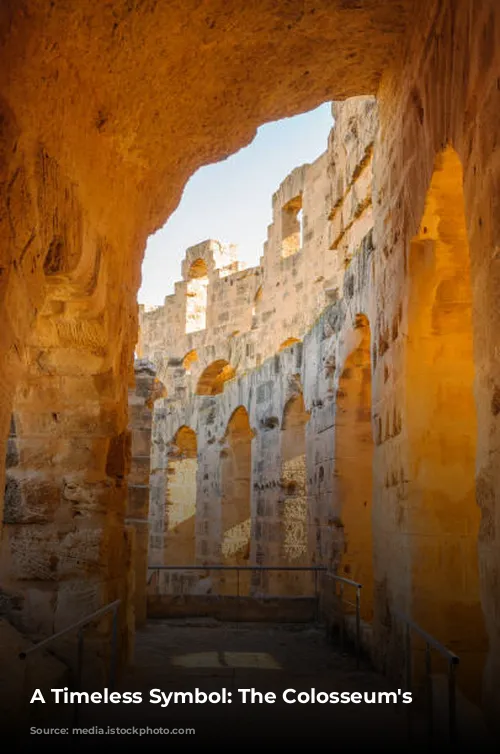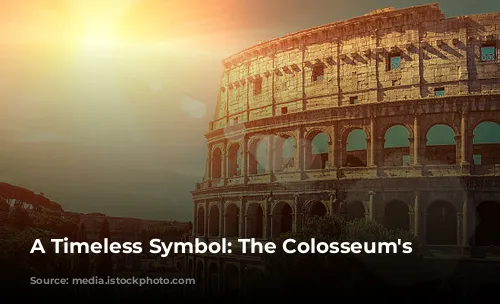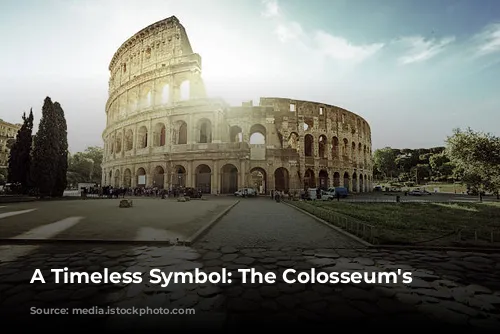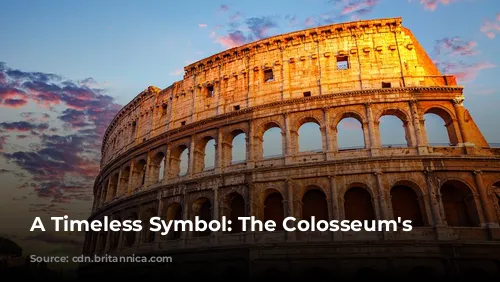The Colosseum, a towering monument to ancient Roman architectural brilliance, stands as one of the few relatively intact structures from the Roman Empire. Its grandeur attracts millions of visitors each year, making it a significant source of revenue for the Italian government. In 2018, the Colosseum, the Roman Forum, and the Palatine Hill generated over $63.3 million (€53.8 million), the highest revenue of any tourist attraction in Italy.
This remarkable monument is a testament to the ingenuity and skill of the Roman people, showcasing their mastery of construction and engineering.
From Arena to Fortress: The Colosseum’s Transformation
After the fall of the Western Roman Empire, the Colosseum fell into a state of decay. In the 12th century, powerful families like the Frangipane and Annibaldi turned the arena into a fortress, claiming it as their own. This iconic structure then served as a quarry in the late 15th century after Pope Alexander VI granted permission for its use. The Colosseum endured over a thousand years of neglect before state-funded restoration efforts began in the 1990s, bringing this magnificent monument back to life.
The Colosseum’s history is a reminder of the changing tides of time, highlighting the resilience of this remarkable structure.
Birth of an Entertainment Icon: The Colosseum’s Purpose
The Colosseum was built as a symbol of revival in Rome following the chaotic year of the Four Emperors in 69 CE. Similar to other amphitheaters, Emperor Vespasian intended the Colosseum as an entertainment venue. The Roman people enjoyed spectacles like gladiator fights, animal hunts, and even mock naval battles within its walls.
The Colosseum was designed to be more than just a building; it was a vibrant heart of Roman entertainment, a place where the people could come together to celebrate and experience the thrill of these grand events.
Construction of a Masterpiece: The Colosseum’s Rise
The construction of the Colosseum commenced under the rule of Emperor Vespasian between 70 and 72 CE. The structure was completed and dedicated in 80 CE by Titus, Vespasian’s son and successor. Domitian, Titus’s brother, added the fourth story to the Colosseum in 82 CE. It’s important to note that the Colosseum was built using plunder from Titus’s conquest of Jerusalem in 70 CE, and Jewish slaves from Judaea were forced to work on its construction.
This grand amphitheater, a testament to Roman power and ambition, was built on the backs of subjugated people, a fact that often gets overshadowed by its architectural magnificence.
An Architectural Marvel: The Colosseum’s Design
The Colosseum, also known as the Flavian Amphitheatre, is an elliptical structure crafted from stone, concrete, and tuff. Reaching four stories high, it measures an impressive 620 by 513 feet (189 by 156 meters) and could accommodate up to 50,000 spectators. The Colosseum’s purpose is famously associated with gladiatorial combat, though it hosted many other events as well.
The Colosseum was an engineering feat, a testament to Roman ingenuity in architecture and construction. It was designed to be more than just a venue; it was a statement, a symbol of Roman power and grandeur.

A Look Inside: The Colosseum’s Features
The Colosseum stands on the site of Nero’s Golden House, a palace that was known for its lavishness. The artificial lake at the center of the palace complex was drained, and the Colosseum was built in its place, a symbolic move to replace a symbol of tyrannical rule with a space for public entertainment. This choice was not just practical, but also symbolic of Vespasian’s desire to replace Nero’s excesses with something more beneficial for the people.
This structure is not just about its exterior; it’s about the stories it holds, the events it witnessed, and the lives it touched.

Engineering Triumph: The Colosseum’s Structure
Unlike other amphitheaters, which were often carved into hillsides for support, the Colosseum is a freestanding structure. Built using stone, concrete, and a complex system of barrel vaults and groin vaults, this remarkable building is an impressive display of Roman ingenuity. The Colosseum’s design incorporates three tiers of arcades framed by Doric, Ionic, and Corinthian columns – a design that became a key element of the Renaissance.
The Colosseum, an architectural wonder, stands as a testament to the Romans’ mastery of construction techniques, combining practicality and artistry in a way that continues to amaze us today.

A City Within a City: The Colosseum’s Capacity
The Colosseum seated around 50,000 spectators, who were protected from the sun by a massive, retractable awning known as the velarium. This awning was supported by masts that extended from the upper story of the Colosseum, and it required hundreds of Roman sailors to manage its intricate rigging. The Colosseum was the scene of thousands of events, including gladiator fights, man-versus-animal contests, and even mock naval battles. While the Colosseum was not used for Christian martyrdoms, it was a witness to countless acts of violence and bloodshed.
Despite its awe-inspiring grandeur, the Colosseum was also a place of immense brutality and suffering, a stark reminder of the darker side of Roman entertainment.

From Glory to Neglect: The Colosseum’s Decline
In the medieval period, the Colosseum was used as a church and then as a fortress by prominent families. The structure suffered damage from lightning, earthquakes, vandalism, and pollution, and over time, its marble seats and decorative materials were stripped away as it was used as a quarry. For over a thousand years, the Colosseum remained neglected.
This once-majestic structure suffered centuries of neglect, serving as a stark reminder of the passing of time and the fragility of even the most enduring monuments.
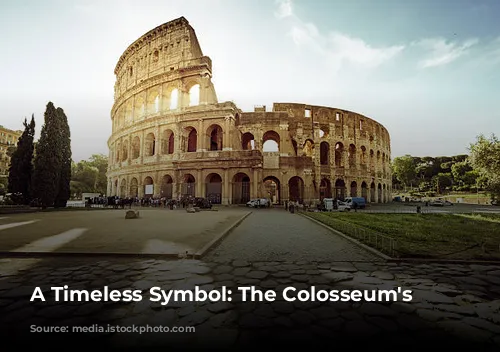
Rebirth of a Legacy: The Colosseum’s Preservation
The preservation of the Colosseum began in earnest during the 19th century, with significant contributions from Pope Pius VIII. A major restoration project was undertaken in the 1990s, breathing new life into this ancient monument. The Colosseum has become one of Rome’s most popular tourist attractions, welcoming nearly seven million visitors each year.
The Colosseum, a symbol of Roman power and ingenuity, has stood the test of time, enduring centuries of change and neglect, reminding us of the enduring power of human creativity.
